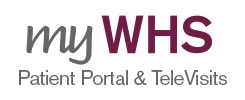 Dr. Carrie Schoonover
Dr. Carrie Schoonover
Dr. Carrie Schoonover is currently a second-year Family Medicine resident at the Washington Health System. She was born and raised in Maryland before moving to eastern Pennsylvania where she graduated from Bryn Mawr College with a degree in Biology and a concentration in Neural and Behavioral Sciences. She then attended the Lake Erie College of Osteopathic Medicine at the Florida campus. She spent two years in Cleveland for clinical rotations before moving to Washington. When she isn’t studying or at work, she enjoys spending time with her family and friends, reading, and playing soccer.
Breast Cancer Awareness Month
October is National Breast Cancer Awareness Month, which means it is a great time to review what breast cancer is and how we detect it. Breast cancer is the second most common cancer diagnosed in women in America, after skin cancer. In the United States 1 out of 8 women will develop breast cancer in her lifetime. While it is less common, men can also develop breast cancer. Even though there is no way to prevent breast cancer, it is very important to be proactive about detecting it early when it is easier to treat.
While there are some characteristics that have been associated with an increased risk of breast cancer, such as family history, the main risk factors for developing breast cancer are female sex and advancing age. Many of the symptoms of breast cancer are not noticeable. However, some of the signs include: a new lump in the breast or armpit, dimpling of the breast, change in the size or shape of the breast, breast pain, swelling of part of the breast, pulling in of the nipple or nipple discharge (other than breast milk). If you notice any of these signs, talk with your doctor right away.
The primary method of screening for breast cancer is with a mammogram. A mammogram uses x-rays to create images of the breast. These images are then reviewed and read by a radiologist to look for signs of breast cancer. Most women should begin getting mammograms when they are in their 40s, and no later than their 50s. Women should talk with their doctor about when they should start having screening mammograms. Also, most women should have a mammogram every 1 or 2 years. Most health insurance plans cover the cost of a screening mammogram.
Your family doctor can help answer any questions you might have about your risk for breast cancer. Talk with your doctor about when you should start getting mammograms and how often you should have them. Encourage your family and friends to do the same and help them get the care they need.


